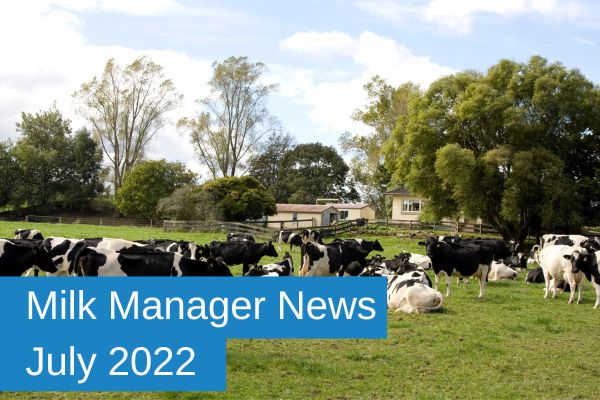Milk Manager News July 2022 – Why Invest in a Slurry Separator?
1 July 2022There are many advantages of slurry separators to improve nutrient management. With increasing focus on manure management to reduce environmental impact and the requirement for 22 weeks of storage for cattle slurry, now could be the time to consider investing in a slurry separator. For those in high rainfall areas that do have yet have slurry store covers, a separator can take the pressure off managing increasing volumes of slurry, allowing more flexibility in the timing of applications when it is most beneficial to the crop.
The separator splits the slurry into a liquid and solid fraction. The liquid fraction is mainly composed of water and soluble materials, which includes nitrogen and potassium. The solids fraction is mainly made up of organic matter, including much of the phosphorus component of the slurry. Depending on the separation technology used, the nutrient composition of the solid and liquid fractions can vary considerably. Therefore, it is worth getting them analysed to know what you are spreading and how much bagged fertiliser may be required as a top up.
By separating slurry, the requirement for storage can be reduced by as much as 30% and there is also a lower risk of pollution from storing and spreading the liquid fraction as the solids fraction contains more of the essential nutrients. With the liquid fraction being significantly lower in dry matter than unseparated slurry, it is much easier to mix, meaning pumping and spreading times can be reduced with a saving on fuel. The application through LESS (low emission slurry spreading) methods are easier without the presence of large solid particles.
As the liquid fraction percolates into the soil more easily, there is less surface run-off and improved availability of N. There is also a lower risk of leaf taint affecting palatability and intakes of grass and silage crops. As weed seeds will be separated out into the solid fraction they will not be spread on the grass. Crusting on top of slurry stores is also eliminated.
The solid fraction is odourless, easily stacked and stored and can be easily transported to further away fields. It is suited to composted within 3 – 6 months, concentrating the product and reducing its volume by 50%. While the liquid fraction is ideally suited to spreading on grassland, the solid fraction is of a crumbly texture, making it easy on machinery to spread on arable ground, ideally at the cultivation stage before drilling cereals or maize. It can also be used as green bedding, as long as the dry matter content is over 34%. Alternatively, it can be sold as a valuable fertiliser to arable farms. For more information on the rules around the use of recycled manure solids (RMS) for bedding please see Red Tractor guidance here: RECYCLED MANURE SOLIDS – SELF ASSESSMENT AND VET REVIEW (redtractorassurance.org.uk)
Mechanical separation is the main method used, relying on mechanical pressure or screens that remove water by pressure, gravity or vibration and can remove up to 75% of solid material. Other separation methods are also becoming available which can remove even more of the total solids so that the separated liquid is almost pure water.
The benefits of separating slurry can contribute towards reducing a farm’s carbon footprint. The reduction in greenhouse gas emissions (mainly methane) through the use of a screw press separator is around 30%.
lorna.macpherson@sac.co.uk; 07760 990901
Sign up to the FAS newsletter
Receive updates on news, events and publications from Scotland’s Farm Advisory Service

